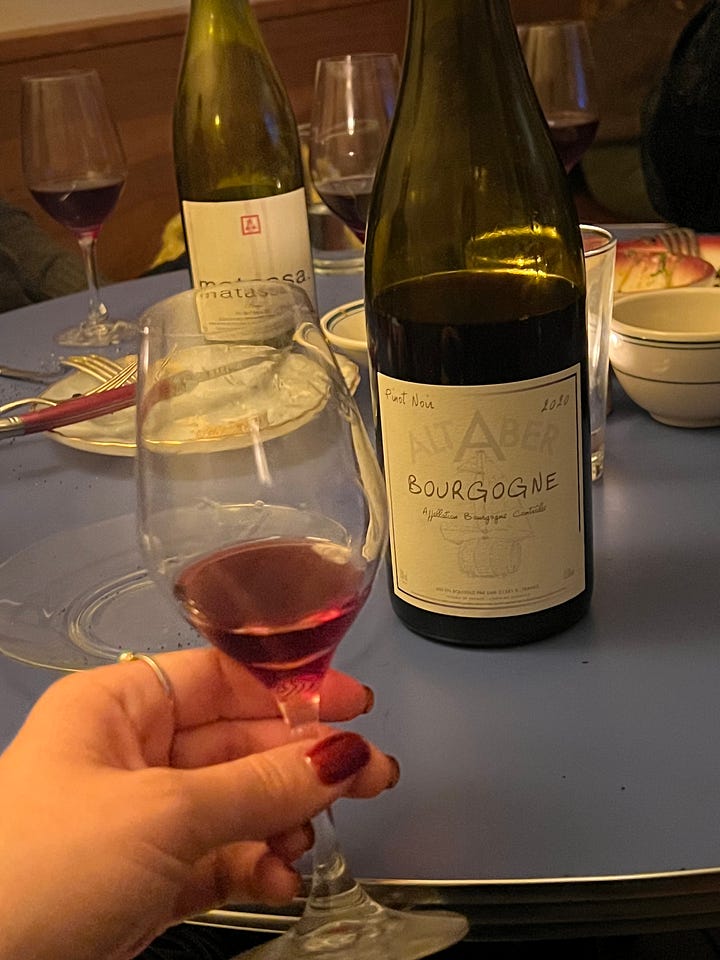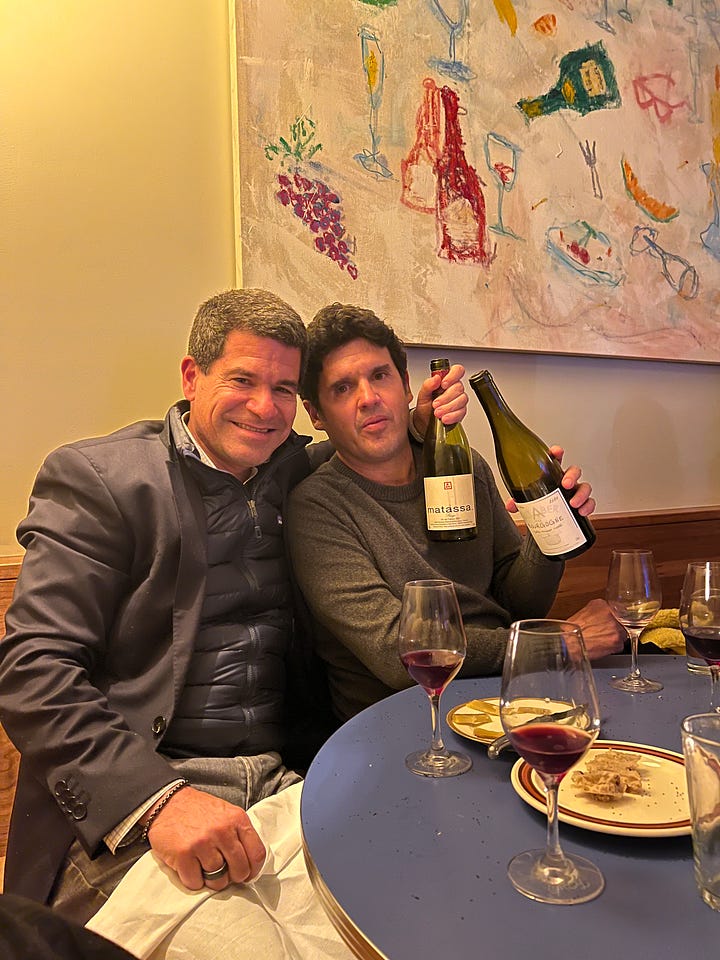Burgundy: the pocket course you didn't know you needed.
Often imitated, never duplicated. What makes Burgundy so special?
This January was the LONGEST month I have ever experienced. I really felt like it was 46 days long. But phew, it’s finally February (ironically, the shortest month of the year…). Before I get into Burgundy, here are a couple of cool things are happening this month:
An incredible Lechon-Lechona Lunch I’m cohosting with Ola and Lasita (last couple tix available!) in Malibu at Weiser Family Farms.
A lovely evening centered around connectivity and community at Tactile Mountain in Pasadena on Feb 12th. I’ll be pouring wine by the glass, but tickets include snacks and conversation with!
A MAS VINO MEET UP!!!!! in DTLA, details on that coming soon but it’ll be mid month on a Thursday! Come drink wine with me and let’s hang and chat and meet other wine lovers.
I recently drank a Burgundy that reminded me why they’re one of the greatest wines/wine regions in the world. I ordered a bottle of Julien Altaber (2020) to show off to my dad that natural wine can indeed be elegant and classic. I guess I needed a reminder myself because I knocked my own socks off with the choice. We had just finished a bottle of Matassa Rouge, which was a bit high in VA at first (burned off after a while, but still too natty for my dad’s taste); so when the Altaber hit the glass, it was smooth and sexy perfecting the balance between juicy red fruits and a touch of forest and dirt after the rain. Quintessentially pinot noir.


So what is Burgundy, really? Burgundy is actually a region in France (Bourgogne en français). It’s a small region with a handful of sub-regions within it known for producing some of the finest, most expensive wines in the world. The two main grapes in Burgundy are: Pinot Noir (aka Bourgogne Rouge) and Chardonnay (aka Bourgogne Blanc). They have a couple other grapes in the region, but the pinot and chard are definitely the most important.
If you hear someone order a Burgundy they’re ordering a pinot noir from the region. If they order a “white Burgundy” the wine is a chardonnay. I know it sounds weird, but the French like to call wines by the region, not the actual grape (also see: Beaujolais is the region, gamay is the grape, etc etc.).
Often imitated, never duplicated. What makes Burgundy so special? Here are a couple important wine facts:
Chardonnay and Pinot are native grapes to this region, therefore the best expression of the grape. (aka the best version of chard and pinot noir!)
Limestone soil is all over Burgundy. This is what gives these wines beautiful minerality.
Each sub-region of Burgundy is known for a different style of their respective grape. For example, Chablis is known for bright unoaked chardonnay, while Côte de Beaune is known for richer chardonnay.
Grand Cru is the daddiest of all the Burgundies. These are the ones! They’re only 1% of the region’s production and they’re meant to cellar and age.
Not all Burgundy wines are hella expensive! You can find some great value wines in the region and there are different tiers of Burgundy from regional wine, to village wine to Premier Cru and Grand Cru—all at different values and with different qualifications.
Beaujolais is NOT part of Burgundy, even though they share a border.
So there you go! A little crash course on Burgundy, inspired by Julien Altaber’s Bougnone Rouge 2020, that I love so dearly. Hopefully you learned something new that you can impress your friends with <3 see you soon!



